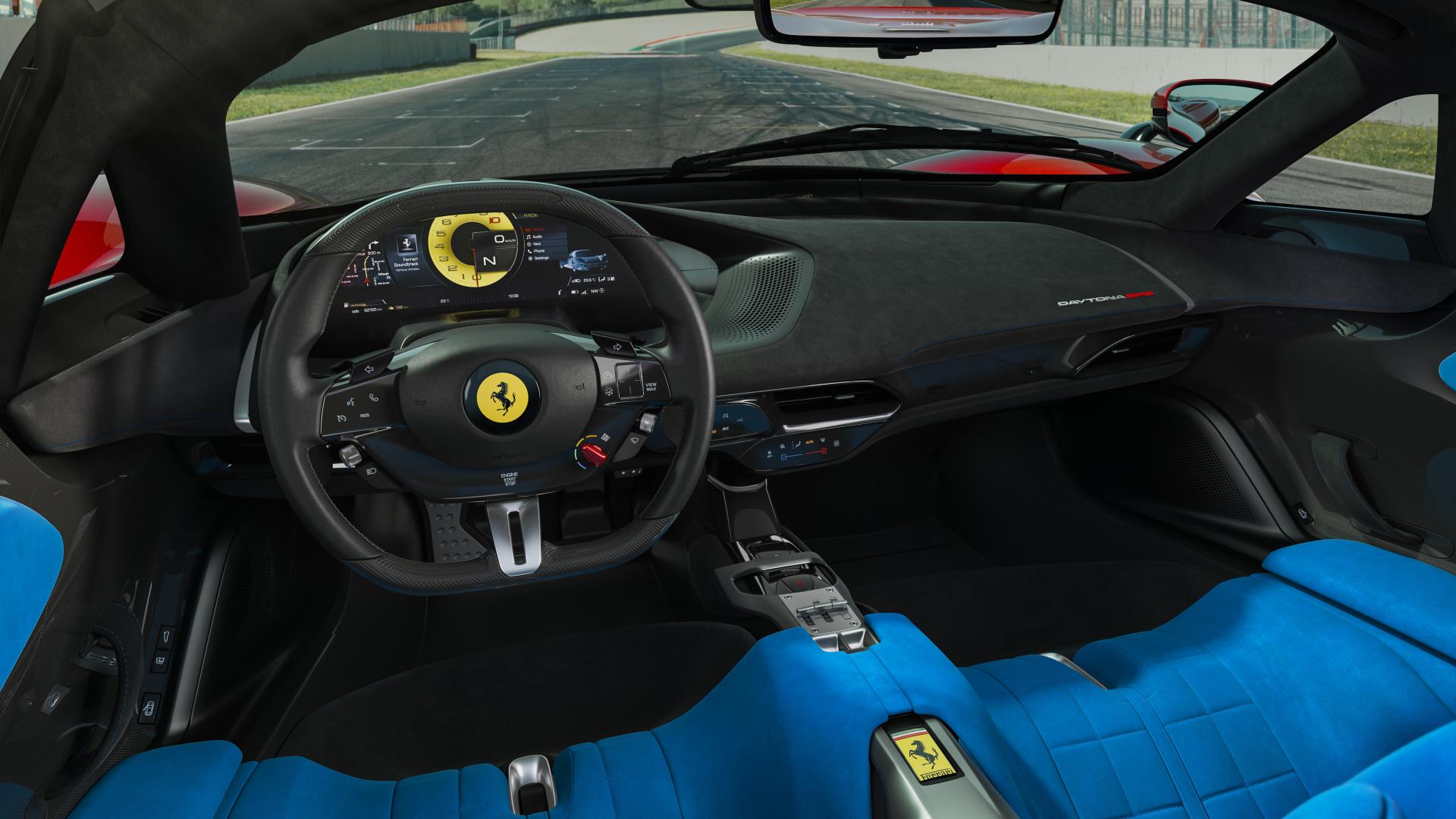The McLaren 570S Spider is madness. Not the car itself, which is a cogent convertible design based on the already handsome coupe. What is crazy is that a 562-horsepower machine that hammers to 62 mph in 3.2 seconds is only considered a sort-of, kind-of supercar. The Spider will be McLaren’s volume model in its lowest-priced, lowest-tier Sports Series designation. As such, it is the company’s starter supercar.
Should you have $208,800 in your Venmo account, you won’t give up anything except that fixed roof. There’s no perceivable performance demerit when it comes to this retractable hardtop, as it was developed alongside the regular 570S from the onset. The 0-to-60 time is a non-discernable one-tenth of a second slower, and it still gets to a 204-mph top speed when the roof is up. If you insist on a top-velocity hurtle with wind bathing the cabin, it would only limit you by 8 mph.
So, yes, madness.
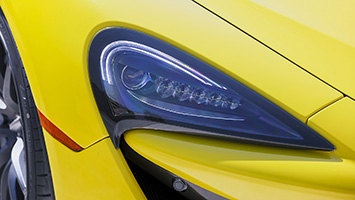
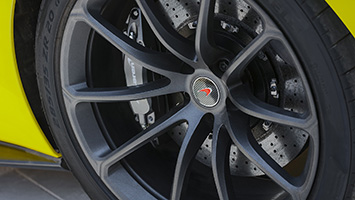
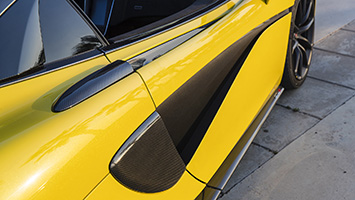
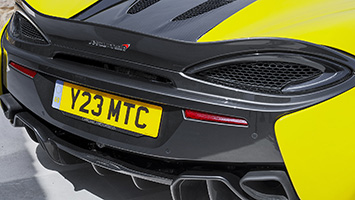
It gains only 101 pounds, bringing it to 2,895. One assumes that the real-world difference is negligible. To find out, we flew to Barcelona, enjoying a full day scuttling over gloriously curvy roads in an otherwise remarkably unpopulated part of the world. I recently spent a week with the regular 570S, so my ass was as calibrated as one could hope. Would there be any failings of the Spider over the coupe?
Our test car was outfitted in a new hue, a deep Vega blue, with a dark finish on the roof and body accents. The Spider retains the same roofline as the hardtop and it is instantly recognizable as a variation. McLaren has finally settled into its own design language, with highly identifiable rear tail lamps and those unique 3D “tendon” doors first seen on the 570S coupe and which have now migrated to the 720S. It’s an architectural-leaning language that translates beautifully into a roadster.
With the top down, the Spider gets more attention than the coupe, and perhaps even more than the 720S, which I tested recently in Rome. Perhaps people simply feel drop-tops are especially exotic. Around the summer bustle of Barcelona, kids jumped up and down and attractive women on scooters gave us the thumbs up. There’s worse places to be noticed. The top goes down in a snappy 19 seconds at speeds of up to 25 mph.


We charged away from the nude beaches near the port and headed northwest, toward the elevations of the Castelltallat mountain range. The EU has laid mile upon mile of excellent tarmac throughout this remote countryside, where traffic lights are nearly nonexistent and most of the traffic is of the tractor variety. It’s the kind of place you dream of driving a convertible, sun browning your nose as you scroll through miles of rolling roads. We never saw a police car.
Under light throttle loads, the 570S is a chilled-out supercar. Like its coupe brother, the Spider is easy to live with. The damping is forgiving in every suspension mode. Even mid-corner bumps won’t unsettle the chassis. You can roll over speed bumps without scraping the underside and a resultant heart attack. The 570S is simply not strung as tightly as Secretariat, so it handles real-world roads in a real-car fashion. It flows over ridges in the road without tramlining or any chatter. I could imagine commuting to work in this thing – if I worked as a Hollywood agent.
The driving position is excellent and the interior materials good. Still, it’s the regular car conveniences where McLaren stumbles. The idiosyncratic seat controls, wonky sport/chassis mode controls, and the dodgy and slow infotainment. If you owned the car, you’d get used to them, but they irritate. The Spider does introduce a new problematic wrinkle as the digital screen washes out when exposed to direct sunlight. It’s even worse if you’re wearing polarized sunglasses. You need a navigator to help parse the navigation.
But when it’s time to get supercar serious, the Spider is remarkably prepared. Rigidity comes from the carbon-fiber tub, which McLaren dubs the MonoCell II and weighs only 165 pounds. This means that the Spider doesn’t need any extra body stiffening. Everything below the beltline is exactly the same as the coupe, including dampers and springs. Only the calibrations were tweaked due to the roof mechanism’s greater weight and slightly higher center of gravity.
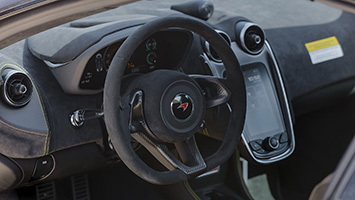
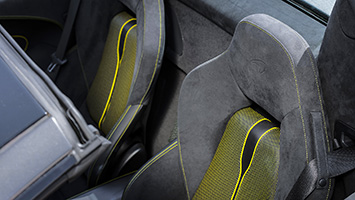
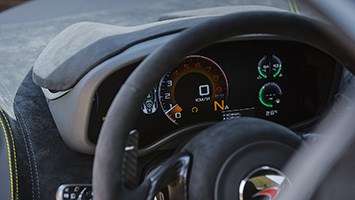
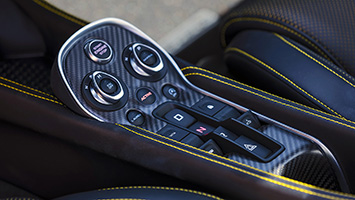
The car wears either Pirelli P Zero or P Zero Corsa tires, and carbon-ceramic brakes are standard. The carbon stoppers are wondrous in full-attack mode, but can feel dull and resistant before they’re warmed up, especially around town. None of the Sports Series models get the hydraulic chassis treatment that comes with the higher-tier cars like the former 12C or 650S. The 570S isn’t likely to see a track day, however, so the system is not missed. The adaptive dampers and standard anti-roll bars do just fine. It also retains true-to-god hydraulic steering, something that’s highly welcome and that McLaren says isn’t likely to change anytime soon.
And of course, the powertrain is the same. The rear wheels are powered by the 3.8-liter, twin-turbo V8, with the aforementioned 562 hp and 443 pound-feet of torque, working with an Italian-produced seven-speed double-clutch. It lacks the absolute linearity of a naturally-breathing engine such as the one in the Lamborghini Huracan, but it’s as close as a turbo setup gets.
When gorgeous roads appear before us – a mix of sine-wave esses, closing-radius turns pinching around cliff walls and fourth-gear sweepers – the 570S gets down to business. I found that the best setup is manual mode, sport suspension and track powertrain. The middle chassis setting allows enough travel for choppy road surfaces, and the amped-up powertrain mode means the engine responds with gusto, but never feels temperamental or jumpy, like too many modern sports cars. McLaren is unbeatable when it comes to these minute calibrations.
And man, you can just slam through roads, choosing to either maximize rolling speeds and smoothness or grab-it-by-the-scruff and lob it through corners. The car’s balance abets the former driving style; its power-and-brake combo the latter. Either way, it’s a delight.
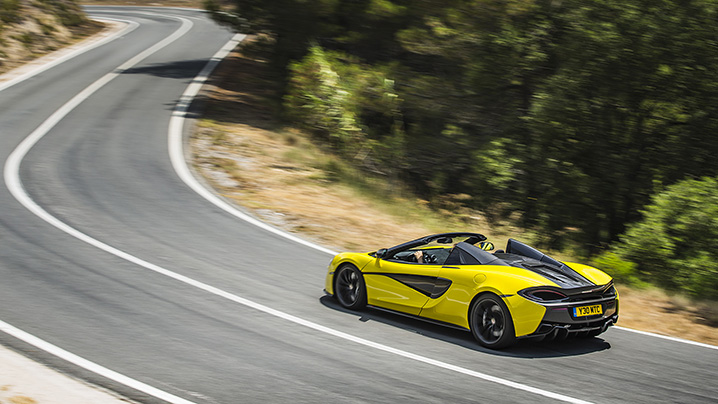
As for the question of coupe versus convertible, my ass-o-meter couldn’t discern a handling difference, and I’m decently keyed into what’s going on underneath me. In most ways, the top-down Spider simply enhances the experience. The aural extravaganza blossoms behind your head and you get a more visceral sense of speed and the roads – and the occasional whiff of flowers or cow shit, too.
But the very best thing is the 570S’s mortal nature. This is no race car for the road, which you could never hope to exploit. Rather, the McLaren is fit for real-world enthusiasts who drive in the real world. You don’t need an extra 200 horses. In the right setting, you can get 8/10ths from the 570S and still know that your talent will run out before the car does.
In this sense, I like it even better than the 720S. That car has the hydraulic suspension and 710 hp, and it is a handful under full throttle on a legal street. Frankly, it’s a handful on a racetrack, best approached studiously and conscientiously.
In comparison, the 570S is carefree and insouciant. A starter supercar? Hardly. But definitely one geared to taste the wind.
Related Video:



